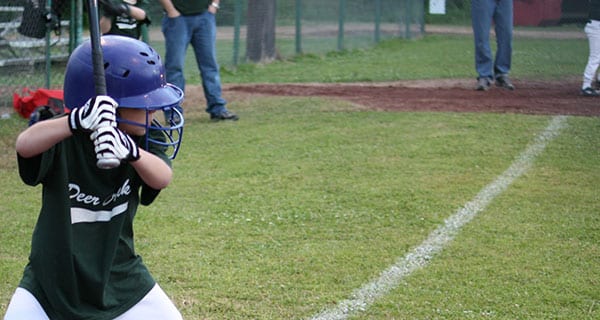 The twin forces of WAAC (win-at-all-costs) and PAAC (profit-at-all-costs) continue to damage the integrity of pro, college and high school sports.
The twin forces of WAAC (win-at-all-costs) and PAAC (profit-at-all-costs) continue to damage the integrity of pro, college and high school sports.
But they have also severely damaged youth sports, an area of sports that used to be a bastion of innocence. That innocence is certainly gone.
There’s just too much adult (adult ego, to be more specific) in youth sports today and it’s hurting our kids.
Less than a quarter of our children, ages six to 12, participate in sports (see “Youth sports still struggling …”). There are multiple reasons why participation is so low but they all derive from adults who focus on their needs and interests rather than what’s best for children.
To start, there are too many WAAC coaches in youth sports who, for self-esteem reasons, focus more on their win-loss records than the holistic development of young people. They yell, scream and degrade young athletes like they are modern-day Bobby Knights. Many kids under the ‘leadership’ of these coaches end up quitting.
In addition, youth sports entrepreneurs – or vultures, as I call them in many cases – are using kids as personal income enhancers via club travel teams, showcase tournaments, camps, personal training sessions, etc.
The sad fact is youth sports have become over-commercialized and professionalized.
Surveys show kids play sports for fun and to hang out with friends. It’s pretty simple. But adult egos subvert those simple desires.
“When you let the adults hijack youth sports, their priorities are going to take the place of what the kids want,” says Bob Bigelow, an author of several books on youth sports.
One sad aspect of the situation in youth sports is that kids from low-income households play sports half as often as children from homes earning $100,000-plus. These low-income kids are three times as likely to be physically inactive. That inactivity hurts their academic performance and leads to health (obesity, etc.) and behavioural problems.
“If we’re really looking at being a more inclusive and healthier society, we should probably get these kids playing together more out on the field – everybody, not just certain populations that can afford it,” says Lisa Delpy Neirotti, an associate professor at George Washington University who conducts youth sports research.
Affordability is a big issue. HBO’s Real Sports With Bryant Gumbel recently had an excellent segment on the growing youth sports participation gap.
It highlights the “two-tier system” in the United States when it comes to sports for kids. The driving force behind this system is the growing cost of participation, which is pricing out millions of kids whose parents can’t afford the exorbitant fees required for elite training programs and club and travel team dues.
As the HBO feature points out, it’s estimated that US$17 billion will be spent on youth sports in America this year. Many parents now spend $10,000-plus per child, per year on youth sports activities. If you want your kid trained by a high-level coach, it will cost you $150 to $175 an hour.
As a result, a ton of kids are simply being priced out of the game. Total participation in youth sports in the United States has dropped eight per cent in just a decade.
To make things worse, school budgets for physical education and sports are being slashed. Due to financial reasons and, just as importantly, an obsessive focus on standardized testing, physical education classes have almost disappeared. For the most part, intramural school sports programs no longer exist. Financial limitations have also caused community recreation programs to cut back on their youth sports offerings.
In past decades, through phys-ed classes, school intramural sports and low-cost community recreation programs, every kid who wanted to play sports could and was encouraged to do so. Not today.
The result is low-income kids, along with non-elite athletes, have very few sports participation opportunities. The only hope for some kids is if local charities and non-profits, like churches, offer free or low-cost sports options. Even if they do, the facilities and level of coaching are a far cry from what wealthier kids get to experience in the growing club sports industry.
Too often, the kids being priced out of youth sports, and those told by elite club teams that they aren’t good enough to play, end up on their couches at home eating junk food and playing video games.
When that happens, the health costs to all citizens rise, as the childhood obesity and physical inactivity rates skyrocket.
As a society, we must begin seriously addressing these adult-based problems in youth sports.
Our kids are counting on us.
Troy Media columnist Ken Reed is sports policy director for League of Fans (leagueoffans.org), a sports reform project. He is the author of The Sports Reformers, Ego vs. Soul in Sports, and How We Can Save Sports.
The views, opinions and positions expressed by columnists and contributors are the author’s alone. They do not inherently or expressly reflect the views, opinions and/or positions of our publication.

